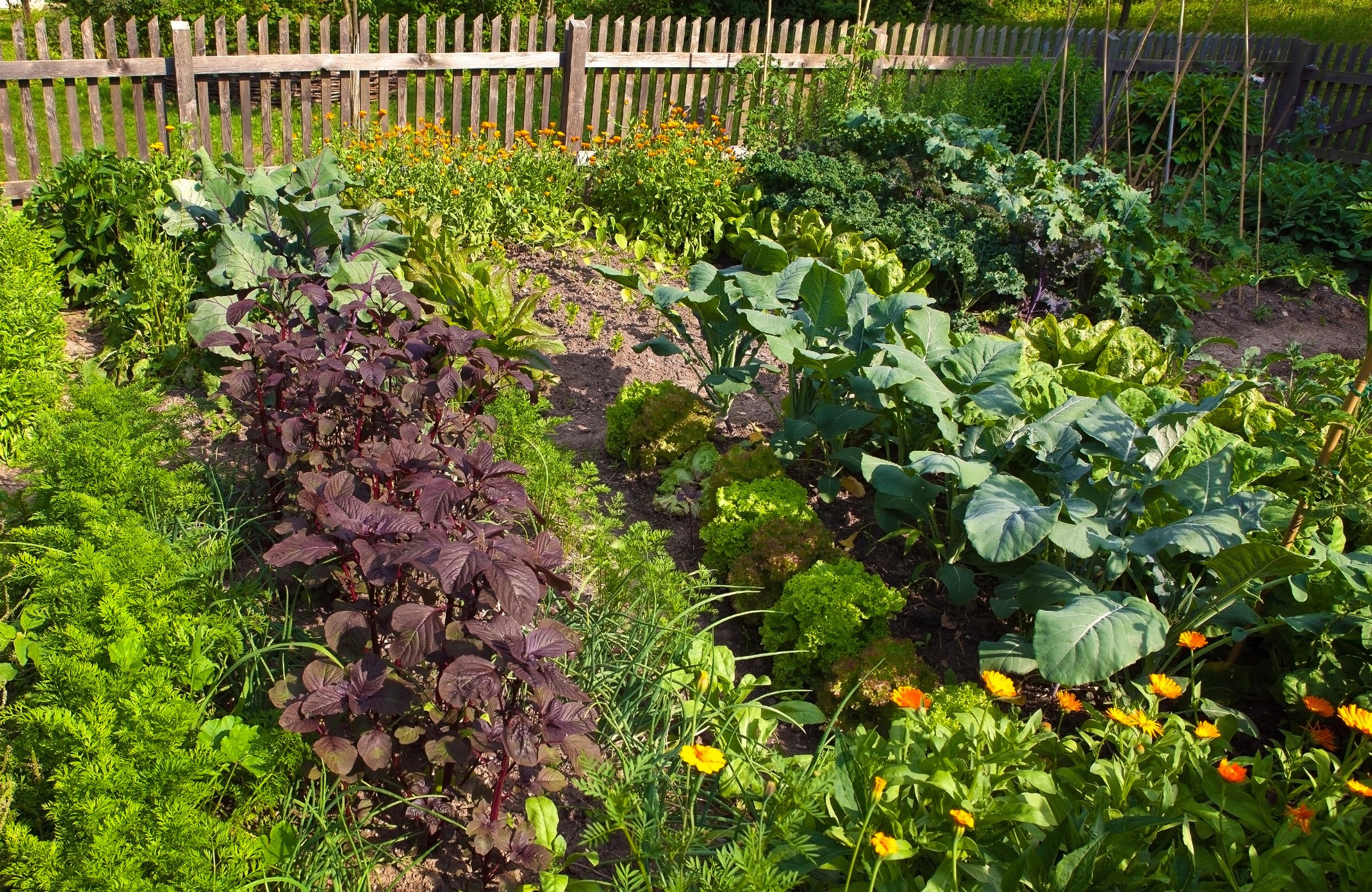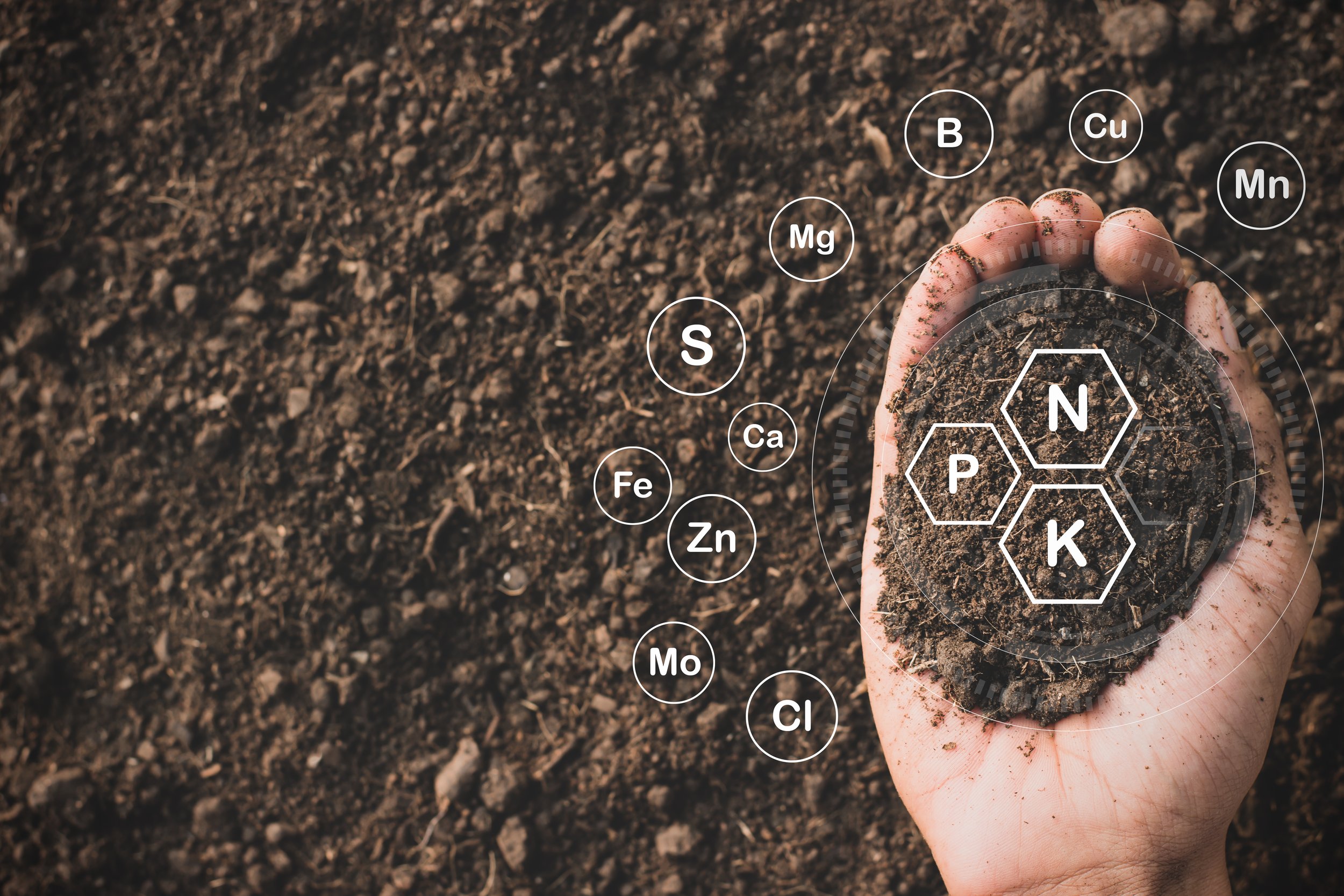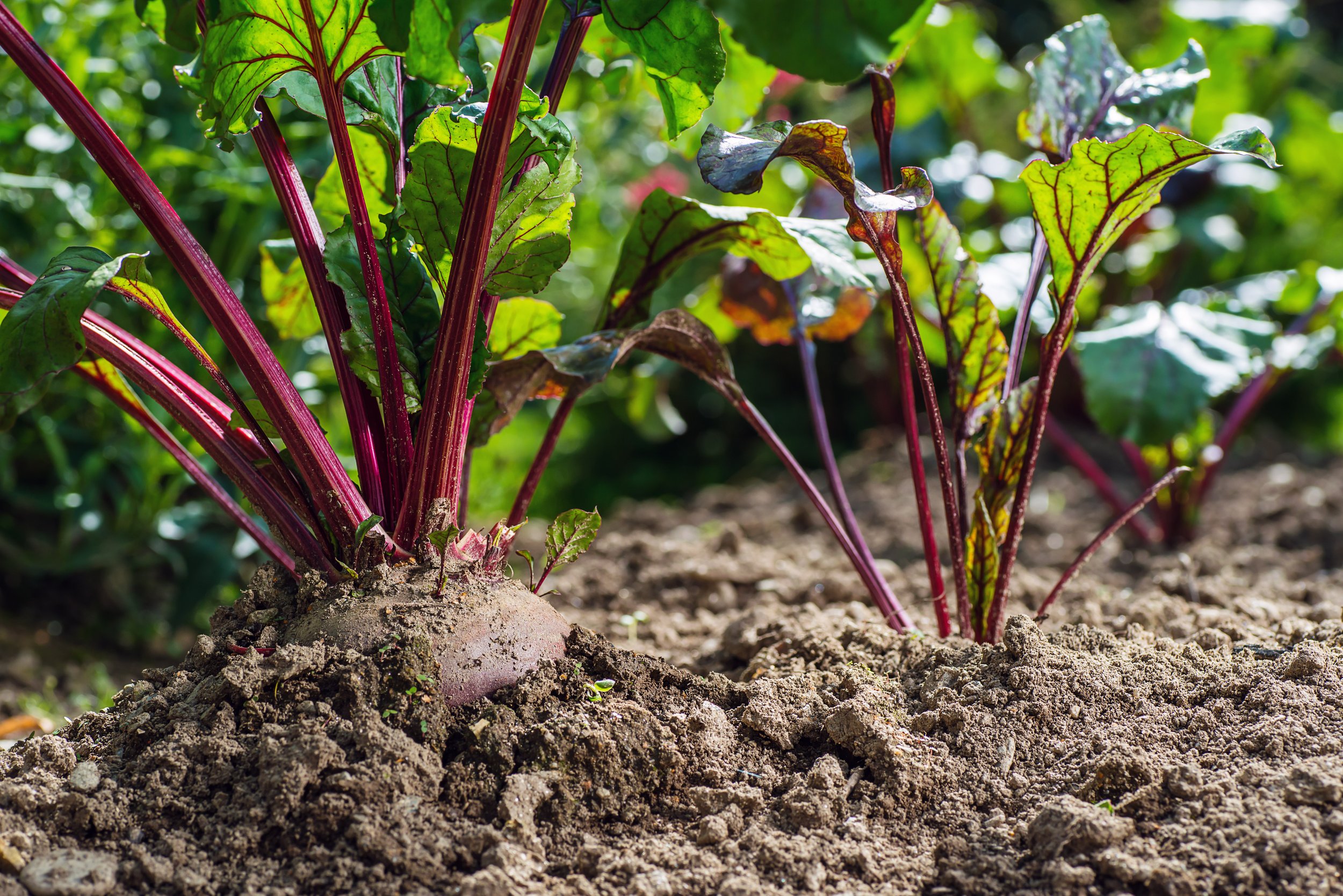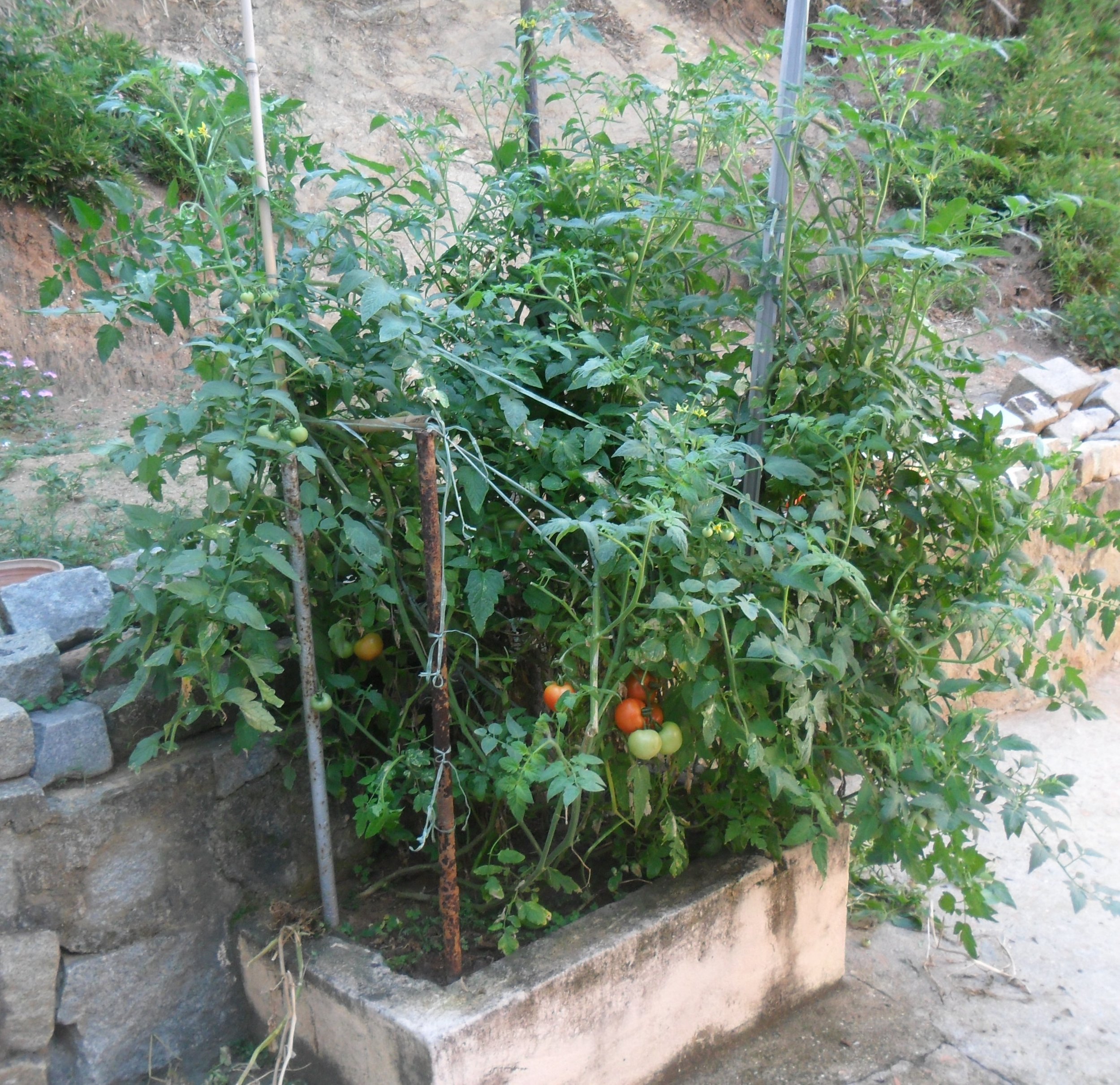Preparing the Vegetable and Herb Garden
Growing vegetables and herbs, as well as some of our fruit trees, shrubs, and vines, requires more soil preparation than for a regular landscape. We have spend thousands of years selecting crops to produce more of what we want out of them, whether it be lush foliage, fruits, flowers, etc. Because we demand more from these plants, we must give more to them.
Many of these plants also come from landscapes that have different soils than we have and we must amend our soils to accommodate these crops—at least to a certain degree. One must accept that one cannot grow any plant they like. There are plants that require too much to keep alive in this climate—since there are so many options for what you CAN grow here, we recommend sticking to the MANY, MANY crops you CAN grow here with much less effort.
That said, growing domestic edible crops requires just a little more work. When you see us recommend “amended garden soil” we mean plots in your yard you have put some work into to make hospitable to these crops.
The guide below includes pictures from our own garden, which was started from scratch.
Select a site that is in full sun, or as close to full sun as you can get. Avoid areas too close to large trees that will root out into the garden, competing for water and nutrition.
Dig out your bed such that you define the area, and explore the soil. Get a sense of what sort of soil you have. Remove foreign objects—lots of trash has been buried in the ground in most places and you may be surprised at what you find—old cans, tools, etc. People also often dump oil or other chemicals on the ground, so look for soil that may be tainted with something unknown, discard the soil.
We will deal with soil types in another article, but get a sense of what sort of soil you have—clayey, sandy, rocky, loamy, or some combination. Remove any large pans of caliche, especially any that block proper drainage. If the soil is just too rocky (some soils have been eroded to the point of being almost entirely bedrock, you may have to make a raised bed).
Select Location,
Dig & Explore
Plant The Water
In many places in the country, you plant gardens on mounds. Where we live, we plant in basins. This is a picture of our garden beds we dug just before it rained. Try to plan your landscape such that the water flows AWAY from your house and human structures, and TOWARDS beds where you will have plants.
Planting gardens in basins makes watering them easier too—basins force the water to go deeper into the soil around the plants rather than running off somewhere away from them.
In other climates plants can drown in lower beds, which is why they plant on mounds rather than in basins. But we live in a dry climate and at times, beds may fill up with water, but they don’t stay that way.
What is more—rainwater is so much better for plants than our tap water or even well water. Rainwater is slightly acidic, which is a welcome addition to our region’s alkaline soils and water. You will notice, especially in summer, how much happier plants are with rainwater than they are with our tap water. This is due to pH.
Amend the Soil
Amending the soil generally means adding products to the soil to improve the nutrition and texture of the soil. This most often includes compost (usually at least 50% compost to your existing soil). Sandy soils will require more compost, but will have excellent drainage, and will need to be replenished more often. Clay soils can be more difficult. In addition to compost, we usually recommend adding gravel to the soil profile to improve the drainage—which really means adding more oxygen to the soil, as oxygen is an important component to healthy garden soil. You can also use coconut coir which is also chunky, holds space for oxygen, and decomposes slowly.
Adding organic material is something you will do seasonally for annual garden crops, as they quickly use up the organic material in the soil. The more organic material is present in the soil, the less you will generally need to feed.
Prepare for Planting
When you are finished. you should have a bed that is slightly sunken, and graded in the middle. While this may take a bit of work to accomplish, this bed will support a wide range of plants, and if managed right throughout the years, will only improve with time.
Remember that plants need nutrition, and that nutrition comes from organic materials (compost, organic fertilizers), and almost countless species of organisms, most that can only be seen in a microscope, which convert that organic material into food for your plants.
There are a multitude of products you can add to the soil, but in general, if you use high quality compost, and only use organic soil amendments, and stay away from pesticides and synthetic fertilizers, your soil biology will improve.
Like magic, many beneficial organisms will appear—worms, and many “decomposing insects” including grubs (yes grubs are good for gardens, not pests, but that is another subject). These organisms convert organic material into food for plants and aerate the soil. Their activities also improve the pH of the soil (bring down the alkalinity).
If you have the capability to harvest rainwater, remember that this is always preferred to using tap water. But occasionally, especially in summer when you need to water more often, you can use acidifying agents like gypsum or epsom salt to acidify your soil. Soil sulfur is ok, but can be hard on beneficial microbes.
Have a Plan for Irrigation
What you do here is up to you and your time, but make sure that you have a plan for irrigation. If you are someone who likes to travel, you might plan to have an irrigation system so that watering happens when you are gone. You may choose to water by hand, but whatever method you use, make sure its dependable, can adapt to changes, and thoroughly soaks the soil profile.
Start from Seed or Plant?
Some plants must be started from seed—root crops like carrots, legumes like peas, these are plants that are best started from seed because they have root systems that do NOT like disturbance, and/or they are plants that resent being in small containers.
There are some plants that can only be obtained from cuttings, like French tarragon, which cannot be grown from seed (they are propagated asexually by cutting) and therefore you must find plants.
Many plants offer the gardener an option—you can plant by either seed or grown starter. Growing plants from seed offers a wider array of varieties to choose from. When yo buy plants grown by nurseries you are subject to whatever varieties they grow, and often they stick with what they know will sell well, rather than offering a wide variety of choices. As a nursery, we try to grow a wide variety of things, but even we are limited as to what we can grow each season, and can never tell what will be popular. On the other hand, sometimes one doesn’t have the time to grow something from seed, and getting starters is convenient. Or sometimes a nursery may introduce you to a plant you didn’t know about.
Feed and Amend
When do you add compost and when do you add organic plant food? Generally, while you are growing plants, you can feed with organic plant food which is usually easy to add to the soil profile—either it mixes easily into the topsoil around plants, or it is water soluble and can be watered right in. We recommend using a general purpose organic fertilizer that is produced with our soil in mind, like Tony’s Magic Mix, which is made right here in Tucson. If you use a general purpose, balanced fertilizer and you have amended your soil, it is seldom you will need much more than that.
Compost needs to be dug into the soil a bit more, which you can do sometimes between plants. But it is easiest to add to the soil when you dig up last season’s plants to make room for the next season’s plants. Compost isn’t always exactly balanced and the quality of the compost depends on the ingredients used. For landscape plants, compost is usually all you need. But for garden plants, you may need to additionally feed, especially for plants like tomatoes, broccoli, and other heavy feeders.
Not All Crops Need to be Fed Much
Some garden vegetables don’t want too much nitrogen, and won’t need additional feeding. Most cool season root crops like beets, carrots, radishes, and the like prefer lower-nitrogen soils, so less plant food. If you feed them too much, they will produce a lot of green growth but not much roots.
Legumes like peas, beans, etc. have natural relationships with mycorrhizae which are symbiotic microbes that help them grab nitrogen from the air and make them available in the soil. You don’t need to feed legumes much.
Put both root crops and legumes in soil that is not very rich and they will do fine. However, do not put legumes and root crops together because the legumes will produce nitrogen, causing the root crops to get really leafy, but not produce much roots.
So far, we’ve been addressing annual crops, crops that live for one season. Perennial crops are different in that they are relatively permanent additions to the garden. Make sure you amend soil well with compost when planting any perennial crop. Many perennial crops are not very demanding for nutrition, but most benefit from occasional feeding with a general purpose organic fertilizer.
Though you don’t generally dig up perennial plants, some can be dug up for divisions—plants like oregano, which spreads by rhizomes, may eventually take up a whole garden bed if not occasionally dug up, divided, and replanted. You will end up with extra plants that you can repot and give away, or plant in another bed. Many people keep spreading plants like oregano, mint, etc. in containers which will limit their spreading, but they will occasionally still benefit from being lifted from the pot, split up, and replanted.
Larger domestic plants that grow into larger shrubs, trees, or vines will have much wider-spreading root systems, and it is important to water and feed like and wide. For such plants, it is beneficial to plant them in nice wide basins that will accommodate their roots. You can also plant other crops around some of these plants in those same basins, if they don’t create too much shade for such plants.
Care of Perennial Crops
Growing Plants in Containers
Container-grown plants, especially in our climate, need to be watered and fed more often. The nature of containers causes nutrients to be pushed out the bottom of the container, and allows for more salt-buildup in the soil perimeter. Also, the temperatures are hotter in container plants which is what causes them to dry out faster. But sometimes people don’t have the ability to grow plants in the ground and need to use containers. For this we recommend using the largest containers you can use. This is especially true for larger plants.
Please pay attention to how large a plant gets. Many people plant too many plants into one container which doesn’t allow enough space for all of them to grow.
For potted annual plants that will be done in one season you can split organic compost with potting soil and when you repot with another crop later you can refresh with more compost (as the compost WILL get used up during the season and the amount of dirt will “shrink”). For perennial plants use potting soil entirely—your nutrition must come from organic compost.
Container plants will need food much more often than plants in the ground, especially heavy feeders.
Besides compost and organic, general purpose fertilizers, there are other amendments that you will see on the market that may be beneficial to your garden. We will address this subject on another section of this website.
Generally there are the following types of soil amendments:
-composted materials and composted manures: these are aged and processed. Fresh manure will burn your plants so make sure the manure has been composted or aged sufficiently.
-plant fertilizers: these come in blended mixes which are aimed at meeting all the nutritional needs of your plants, or single ingredient products which the home gardener can use to make their own blend
-soil conditioners: there are products that focus on other elements of soil, especially at the humic level, which improve the soil in a way plants like.
-microbe inoculants: some products introduce organisms that are beneficial to plants, or are used to control pest in the soil
We will address all these products on other pages, but always pay attention to what these products do, and how they work with OUR soil. Remember our soil and water tends to be alkaline. Many parts of the world have acid soils and need to use ingredients to alkalize their water or soil. So be careful—just because someone in Oregon had great luck using one product doesn’t mean it will work for you. Alway rely on LOCAL information to address our own, unique soils and growing conditions.












